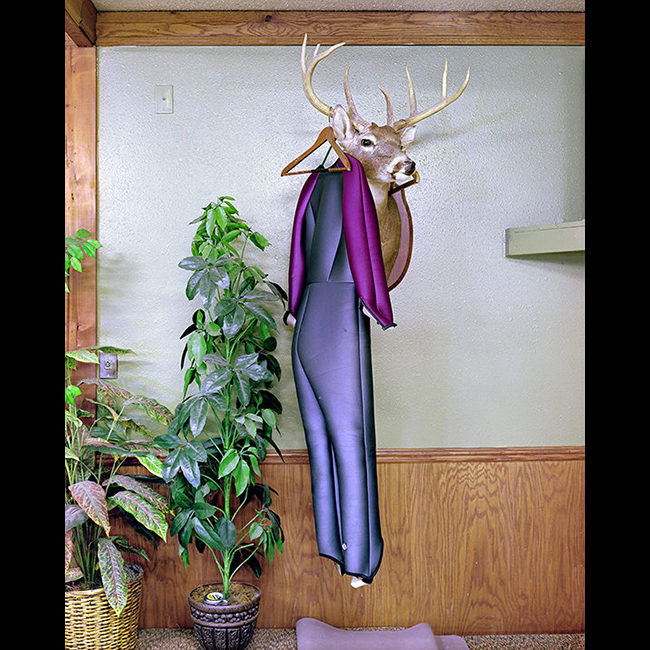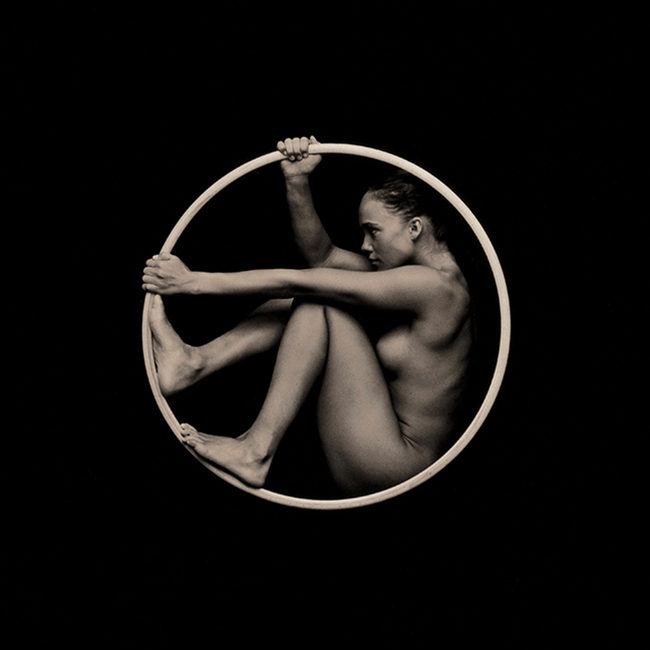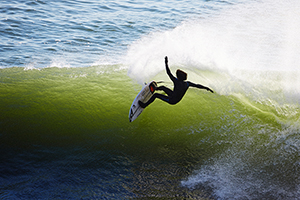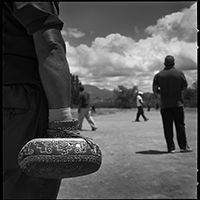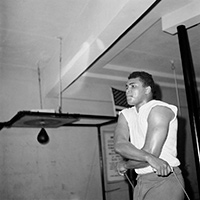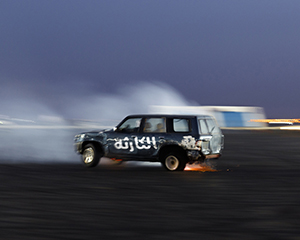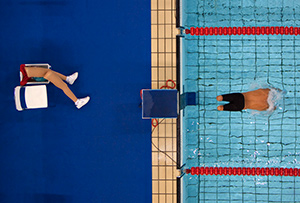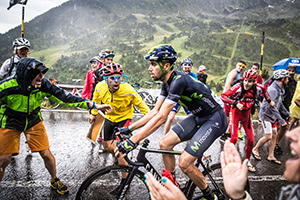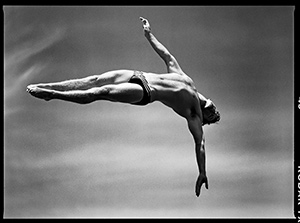It took a mile and a half of blue gaffer tape, seven assistants, two anamorphosis artists to plan the distorted perspective and two parkour artists to leap around a derelict Glasgow swimming pool to make Joseph Ford’s recent editorial for Avaunt, a London adventure magazine. “Everything is for real,” Ford tells PDN by email. “The tennis court was laid out by hand by a team of ten people under the direction of Papy and Milouz from TSF Crew,” who also specialize in anamorphic graffiti. “The parkour artists, Kevin Francomme from Parkour Generations and David Banks, jumped off balconies, ran sideways along the walls and generally risked serious injury to create these images.”
Ford says finding the right venue was a challenge. “We spent a couple of months looking at various options, but although there were plenty of people who were enthused by the project, it was tough finding somewhere with surfaces suitable for putting down so much gaffer tape. It had to be somewhere in reasonable condition with relatively smooth surfaces, otherwise the tape wouldn’t have adhered properly, but we also wanted an abandoned/derelict aesthetic. Our amazing producer, Madeleine Penny,” director of photography for Avaunt, “found the location and persuaded them to let us shoot.”
Assistants spent half a day cleaning and drying the pool before the tape could go down, since missing glass in the roof had let in rain. “The most complex part of the shoot itself was installing the anamorphosis,” says Ford. “Once the pool was clean and I had decided where I wanted the ‘tennis court’ situated, the anamorphosis experts…got to work with lasers, working out where the lines of the court should go and instructing us on where to put the gaffer tape. It was about 15 hours work for 12 of us, and we had to do a fair part of it in the dark so the laser line plotters would be properly visible.”
Water continued to come through the roof, making it difficult to keep the tape down, and requiring constant drying so the athletes were safe from slipping. “We had to ensure that the surfaces they were using were dry at all times to reduce the risk of them slipping and injuring themselves,” says Ford. To light the scene, Ford used Broncolor Scoros high speed flash and additional HMI for some wider shots. He shot with a Hasselblad H5D-50C.
“The main consideration for the anamorphosis was that I wanted to build a story which began by showing elements of the lines in a way that wouldn’t allow the viewer to decode them and recognize a tennis court,” Ford says. “The great thing about anamorphosis is that a small move from the central viewing point renders the image incomprehensible. In the case of tennis court markings, you create a network of geometric lines which have their own beauty. From very abstract images we moved towards two final pictures, one with the court viewed as a whole, but from a point where the anamorphosis didn’t function legibly, and then a last image viewed from the correct perspective, which revealed the tennis court, with the players on it.” The results build a narrative of surprise and recognition through movement.
Related Stories:
Fashionable Landscapes: An Aerial View
Plunge
Dylan Coulter Puts Sports Portraits in Motion (for PDN subscribers; login required)

